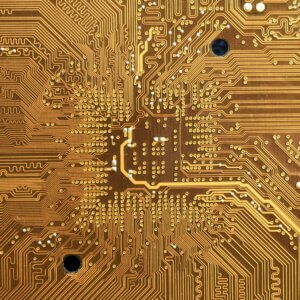We may earn money or products from the companies mentioned in this post.
Unveiling Quantum Computing
The evolution of computing over the decades has always brought forth fascinating leaps of innovation, leading us towards the brink of an impressive era marked by the rise of quantum computing. This journey into the uncharted territories of computing opens up new paradigms and challenges our traditional understanding of computation. This discourse aims to acquaint the reader with the nuances of this path-breaking technology, starting from the elementary principles to practical implementations. It commences by diving into the very crux of Quantum Computing, differentiating it from classical computing. It further unveils the enigmatic operational units, the Qubits, and explores the mastermind behind the immense power of quantum computers – Quantum Algorithms. As the discourse culminates, it unveils how this cutting-edge technology is expected to revolutionize numerous sectors.
Basics of Quantum Computing
Diving headfirst into the mesmerizing world of quantum computing can be thrilling! Grounded by the same principles that guide the mystifying field of quantum physics, this revolutionary technology holds limitless potential to reshape the digital era. It operates on a completely different framework than classical computing, making it a magnificent rabbit hole for the curious mind, eagerly looking for something out of the ordinary.
At the heart of quantum computing lie quantum bits, or ‘qubits’. Unlike classical binary bits (which exist as either a 0 or a 1), the allure of quantum computing comes from a qubit’s astonishing ability to occupy both states simultaneously. This phenomenon, known as superposition, acts as the backbone of quantum computing and is what sets it way apart from its classic counterparts. It’s this ability that grants quantum computers their exceptional speed and enormous processing power.
Another fascinating principle of quantum computing is entanglement. Imagine two entangled qubits, no matter how far apart, they can instantaneously influence each other. Change the state of one qubit and the state of the second will instantaneously follow suit, a phenomenon Einstein famously referred to as “spooky action at a distance”. In practical terms, this characteristic could profoundly enhance computational efficiency and speed in solving complex problems and conducting simulations. Quantum computing is undoubtedly intricate, yet incredibly exciting. It’s like waltzing through a mind-bending labyrinth and discovering something intriguing at each turn.

Quantum Bits or Qubits
Deeper into the fantastic world of quantum computing, qubits serve as the heart of this progressive technology. Think of them like the bits in your standard computer, but with a thrilling twist: while regular bits are binary, using a system of 0s and 1s, qubits can inhabit both states simultaneously, thanks to the superposition principle. This characterizes the core principle of quantum mechanics and, in turn, quantum computing. As a result, they open the pathway to process considerable amounts of data at extraordinary speeds. Thus, qubits triumph over classical bits in an avalanche of calculus resolutions.
Alluring is the prospect of quantum computing due to its potential to solve complex problems at unworldly speeds. But the road to fully-functional, error-free quantum computers remains paved with significant challenges, that mainly revolve around maintaining superposition and entanglement under everyday conditions. However, despite the intricacies and complications, one cannot deny the fact that these fascinating qubits bring with them a promise of a whole new era of computational and technological advancement. Here’s to the mind-boggling power of quantum physics and the future it holds for computing!

Quantum Computing Algorithms
Delving into the world of quantum computing algorithms, let’s start with two of the most groundbreaking ones: Shor’s algorithm and Grover’s algorithm.
Shor’s algorithm, introduced by Peter Shor in 1994, has astounded the world with its potential to factor large numbers exponentially faster than any known classical algorithm. If effectively implemented on a large-scale, fault-tolerant quantum computer, Shor’s algorithm could decode almost any encoded communication – including breaking most internet encryption.
In its essence, Shor’s algorithm leverages the quantum phenomenon of superposition to create a quantum uncertainty over all possible solutions, then cleverly applies principles of quantum interference to cancel out the incorrect solutions, thus leaving the correct factors with high probability. Quantum Fourier Transform, a key part of the algorithm, helps transform the complicated mathematical problem of factoring into a much simpler task of finding the period of a function, which can be performed at a breathtaking speed by a quantum computer.
On the other hand, Grover’s algorithm, introduced by Lov Grover in 1996, allows for searching an unsorted database more efficiently than any classical algorithm. In essence, it’s like finding a needle in a haystack. In this algorithm, all possible answers are equally superimposed, and then a method known as amplitude amplification is used – where the potential solution’s amplitude (or probability) is increased with each iteration. Essentially, Grover’s algorithm works by amplifying the probability of the correct answer, while shrinking the probabilities of all other answers – executing an activity known as quantum walk, leading to a substantial reduction in search time.
Complex number manipulation, nested implications, and probability inversions make these quantum algorithms not only revolutionary but truly intriguing. Each algorithm exemplifies practical applications of unique quantum principles – be it fast factorization (Shor’s) or efficient database search (Grover’s), thus revealing the fascinating world of quantum computation algorithms. Delving into these quantum algorithms deepens the understanding of quantum mechanics, opening doors to new innovative solutions to complex problems.
Practical Applications of Quantum Computing
Quantum computing’s roots may be embedded deeply in highly theoretical and mathematical sciences, but its branches are stretching toward daily applications everyone can appreciate. Let’s delve into a world of seemingly fantastical possibilities being brought to life by this cutting-edge technology.
One tempting slice of the quantum application pie comes from the world of cryptography, and by extension, cybersecurity. Employing the properties of qubits, quantum cryptography utilizes the quirky behavior of particles at quantum level to put together virtually unbreakable security algorithms. Known as Quantum Key Distribution (QKD), this technique crafts cryptographic keys with so much complexity and randomness that any kind of interception or hacking activity can be detected. In fact, once widely accessible, QKD could shake up everything from online banking to the way confidential government communication is conducted. The ripple effect has the potential to radiate across all sectors that rely on secure data transmission, dramatically transforming cybersecurity as we know it.
Beyond this fascinating application, drug discovery and healthcare can also benefit from quantum computation applications. The intertwining maze of chemical interactions within biological systems requires substantial computational power—the kind quantum computers happen to have—to simulate and understand. Efficiently modeling molecular structures and reactions using quantum computers could expedite drug discovery – and we’re not just talking a touch faster; we’re talking game-changing expedience. Take COVID-19, for instance. A quantum computer could simulate the interaction between potential drugs and the virus, speeding up the drug discovery process. Similarly, in personalized healthcare, quantum computation could make a difference by speeding up genomic sequencing or enabling more complex models to predict the progression of diseases. Quantum computing, standing at the nexus of seemingly separate realms of knowledge, has the fascinating potential to bridge gaps, challenge norms, and open doors to new pathways towards progress. So, step back and marvel—this is the dawn of the quantum era.

As we continue our journey of technological advancements, the importance of understanding and unlocking the potentials of quantum computing cannot be understated. As the discourse unfolds, it became evident how quantum computing extracts its power from principles that defy the norms of classical computing. With its unique capabilities, the technology is poised to redefine our approach to computational problems, leaving a significant impact on various sectors. The horizons of quantum computing are ever-expanding, from enhancing cryptography to advancing material science, its implications are broad and profound. The developing quantum era holds promises of solving complex problems with unprecedented speed and efficiency, leading us towards a future of limitless possibilities.
You Might Also Like – A Peek Into Cryptography


